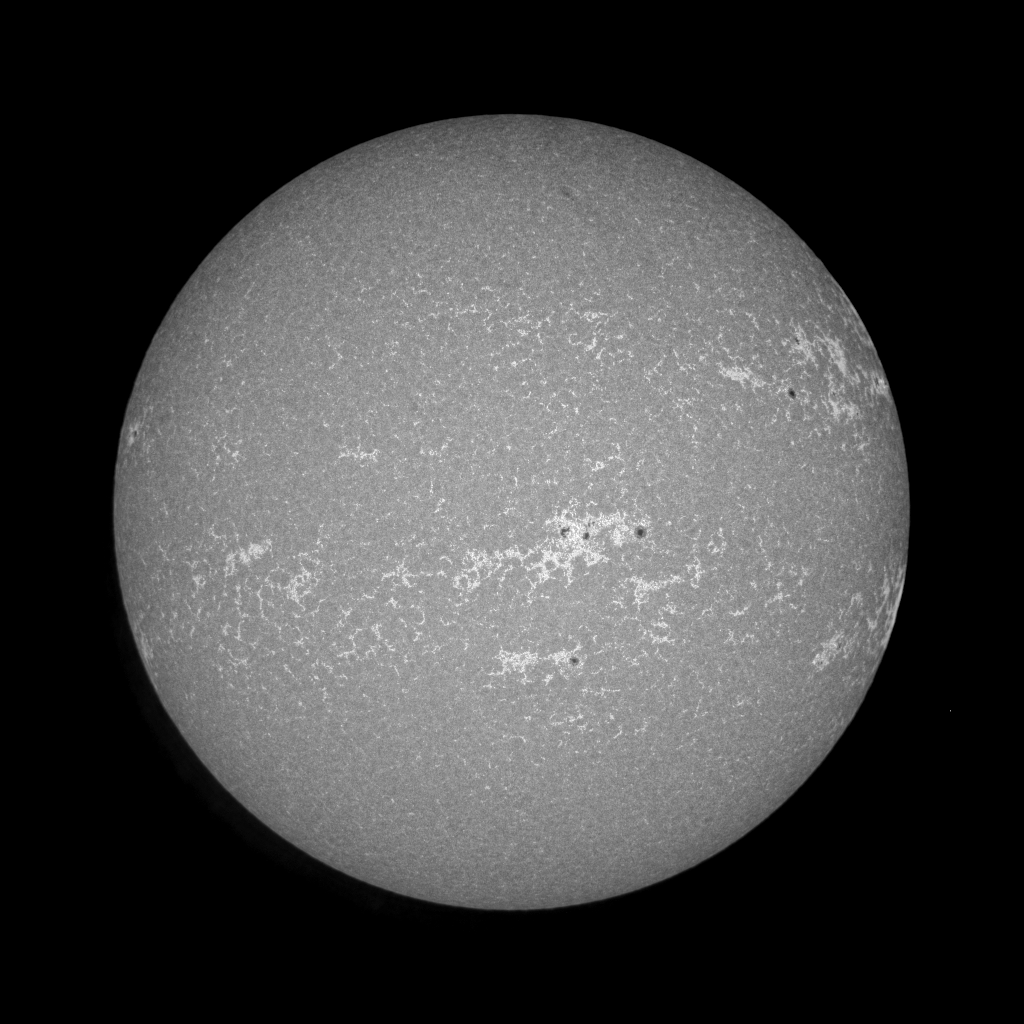We finally managed to find Comet Panstarrs from the observatory pad last night, but it was very low down in the glow from Pontefract, so not easy to image!
This is a stack of 15 2-minute guided exposures using my EOS 550d DSLR on the back of a William Optics Zenithstar 80. It was visibly moving between images, so I've stacked the frames based on the comet, hence the star trails. The long 'pause' in the trails was due to a bank of cloud that graced us with its presence, but it did provide a good opportunity to get a brew on and take some darks.
I stacked it with DeepSkyStacker and very crudely processed it with CS5. I'll see if Bill can tweak some more detail out of the raw stack file on Tuesday!
Moon 28th April 2013 02:23am ( 3 days Past Full Moon)
This is an image of the Moon taken in the early hours of Sunday 28th April at 02:23am at the WYAS observatory.
As per the image take on the 19th April, it was taken with a Celestron 8" SCT on the Large Pier with a Canon 40D DSLR. without a f6.3 reducer installed (see note below). 50 images were taken at 1/640th sec at ISO 1250 for approx. 1/2 the moon was imaged in each 50 image set (upper and lower). This is due to using the 8" SCT without the f6.3 reducer which does not give a full image of the moon within the DSLR image frame. Each half moon image set was first stacked in RegiStax 5 using the RAW image frames. Then the stacked images was saved as 16Bit TIFF and imported in to Photoshop 6 using the MERGE option to combine the half moon images to a Full Moon image. Then it was lightly processed in Photoshop for the image as shown.
What is an f6.3 (f3.3) Focal Reducer:-
A focal reducer mounts directly to rear of a telescope and alters the field of view / focal length of the telescope for astrophotography. When an f6.3 reducer is fitted to an SCT which is normally f10 it reduces the f10 to f6.3 reducing the exposure time required to image a deep sky object. A typical 5 minutes exposure at f10 would be reduced to 3 minutes. However, the focal length of the telescope is also reduced so the image object is reduced in size. A typical 8" SCT focal length 2000mm is reduced to 1260mm. This effectively provides a larger field of with within the DSLR image frame. (The f3.3 does exactly the same changing an f10 to f3.3 but reducing a 2000mm focal length telescope to 660mm).
Having suffered a calamity with my polar alignment during a night time accident I spent quite a while correcting it. This is my first attempt at M13 in Hercules following the re-alignment. At 2am in the morning of 28th April 2013 I decided to grab 40 minutes worth of images to compensate for the hard work. 10 minutes each of LRGB using an Opticstar 145m-ice camera, Baader filters, Televue 102 and a Lodestar guide camera. processed in MaximDL and Photoshop CS3. Probably due to lack of sleep I could not correct the colours properly, so I converted it to black and white.
Moon Image (Just past 1st Qtr)
 This is an image of the Moon taken on Friday 19th April 22:20 at the WYAS Observatory.
This is an image of the Moon taken on Friday 19th April 22:20 at the WYAS Observatory.
Taken using a Celestron 8" SCT on the Large Pier with a Canon 40D DSLR, PC connected and operated via Canon EOS for remote DSLR control. The image was also taken using a f6.3 reducer, (see note below). 50 images taken at 1/640th sec at ISO 1250. These were then stacked in RAW image format using the older RegiStax 5. The image saved as a 16bit TIFF and was then opened in PhotoShop and lightened a little to give the final image.
What is an f6.3 (f3.3) Focal Reducer:-
What is an f6.3 (f3.3) Focal Reducer:-
A focal reducer mounts directly to rear of a telescope and alters the field of view / focal length of the telescope for astrophotography. When an f6.3 reducer is fitted to an SCT which is normally f10 it reduces the f10 to f6.3 reducing the exposure time required to image a deep sky object. A typical 5 minutes exposure at f10 would be reduced to 3 minutes. However, the focal length of the telescope is also reduced so the image object is reduced in size. A typical 8" SCT focal length 2000mm is reduced to 1260mm. This effectively provides a larger field of with within the DSLR image frame. (The f3.3 does exactly the same changing an f10 to f3.3 but reducing a 2000mm focal length telescope to 660mm).
Subscribe to:
Posts (Atom)





